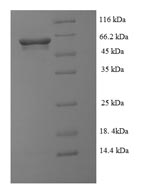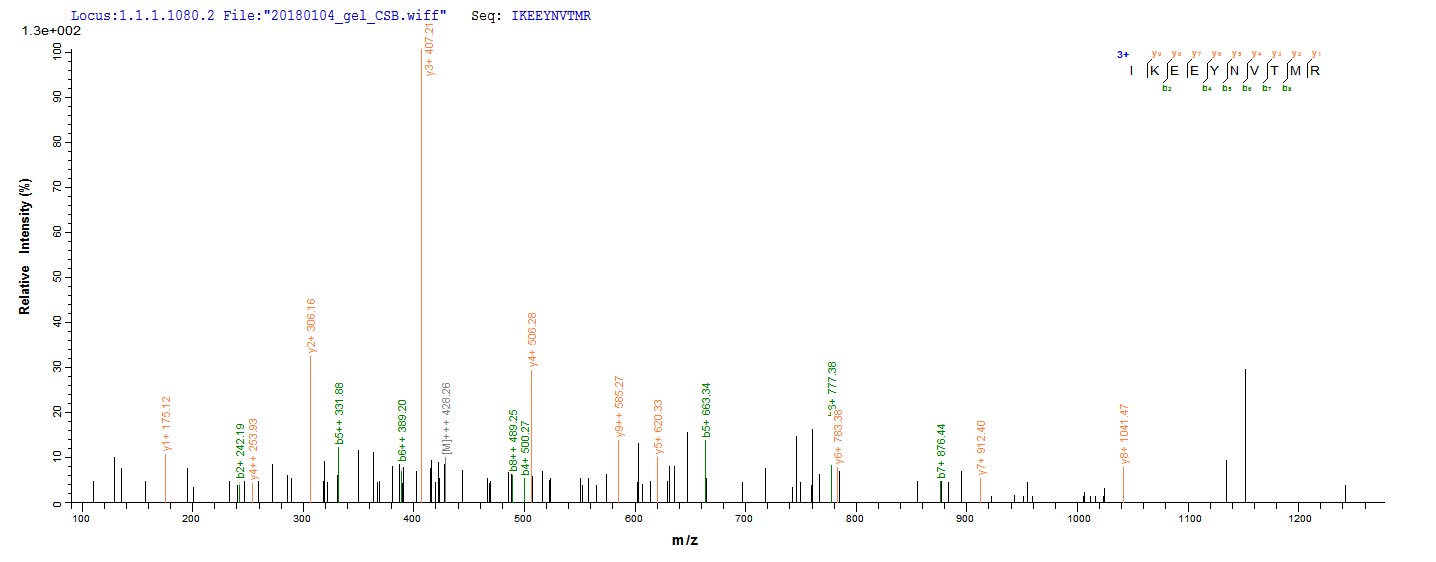Recombinant Clostridioides difficile NAD-specific glutamate dehydrogenase (gluD) gets produced in E. coli and contains the complete expression region spanning 1-421 amino acids. The protein carries an N-terminal 6xHis-SUMO tag for better solubility and easier purification. SDS-PAGE analysis shows purity levels above 90%, which appears to make it well-suited for research applications that demand high-quality protein.
NAD-specific glutamate dehydrogenase serves a central function in amino acid metabolism by catalyzing the oxidative deamination of glutamate to α-ketoglutarate. This enzyme seems crucial for bacterial nitrogen metabolism, enabling the conversion between amino acids and metabolic intermediates. Understanding this protein may provide insights into metabolic pathways and regulatory mechanisms in Clostridioides difficile and related bacterial species.
Potential Applications
Note: The applications listed below are based on what we know about this protein's biological functions, published research, and experience from experts in the field. However, we haven't fully tested all of these applications ourselves yet. We'd recommend running some preliminary tests first to make sure they work for your specific research goals.
Clostridioides difficile NAD-specific glutamate dehydrogenase (gluD) is a complex enzyme that requires precise folding, proper NAD-binding site formation, specific oligomerization (typically a hexameric structure), and correct active site conformation for its functional activity. The E. coli expression system is homologous to this bacterial enzyme, which increases the probability of correct folding. However, the large N-terminal 6xHis-SUMO tag (∼15 kDa) may sterically interfere with the protein's oligomerization interfaces and active site domains. While the full-length protein (1-421aa) contains all functional domains, the probability of correct folding with functional enzymatic activity requires experimental validation of oligomerization and NAD-dependent activity.
1. Biochemical Characterization of NAD-Dependent Enzymatic Activity
This application carries a significant risk without functional validation. GluD enzymatic activity requires precise oligomerization, proper NAD-binding site formation, and correct active site conformation. If correctly folded and active (verified through enzyme assays), the protein may be suitable for kinetic studies. If misfolded/inactive (unverified), kinetic measurements will yield biologically meaningless results. The SUMO tag may sterically interfere with substrate access.
2. Protein-Protein Interaction Studies Using His-Tag Affinity
This application requires proper folding and oligomerization validation. GluD interactions with metabolic partners require native hexameric structure and precise tertiary structure. If correctly folded (verified), the protein may identify physiological interaction partners. If misfolded/unverified, there is a high risk of non-specific binding or failure to replicate genuine metabolic complex formation.
3. Antibody Development and Validation
This application is highly suitable as antibody development relies on antigenic sequence recognition rather than functional enzymatic activity. The full-length protein provides comprehensive epitope coverage for generating gluD-specific antibodies. The high purity (>90%) ensures minimal contamination-related issues during immunization protocols.
4. Comparative Enzyme Structure-Function Analysis
Meaningful comparative studies require native enzyme conformation and functional activity. If correctly folded and active (verified), the protein enables valid evolutionary comparisons of glutamate dehydrogenase properties. If misfolded/inactive (unverified), comparative analyses would yield misleading insights about enzyme specificity and evolution.
5. Metabolic Pathway Reconstruction Assays
This application carries a high risk without functional validation. Metabolic pathway integration requires native enzyme conformation and full catalytic activity. If incorrectly folded, the protein will not exhibit authentic metabolic flux and may yield biologically misleading results in pathway reconstruction experiments.
Final Recommendation & Action Plan
The E. coli expression system is favorable for producing this bacterial gluD, but the large SUMO tag may interfere with proper oligomerization and enzymatic activity. Begin with functional validation using NAD-dependent activity assays and size-exclusion chromatography to confirm hexamerization before considering functional applications. Applications 1, 2, 4, and 5 require rigorous validation. Application 3 (antibody development) can proceed immediately. For reliable metabolic studies, confirm specific activity and consider tag removal for critical functional applications to minimize steric interference.








